
Making Space at the Table
NAP Contemporary’s group show, The Elephant Table, platforms six artists and voices—creating chaos, connection and conversation.
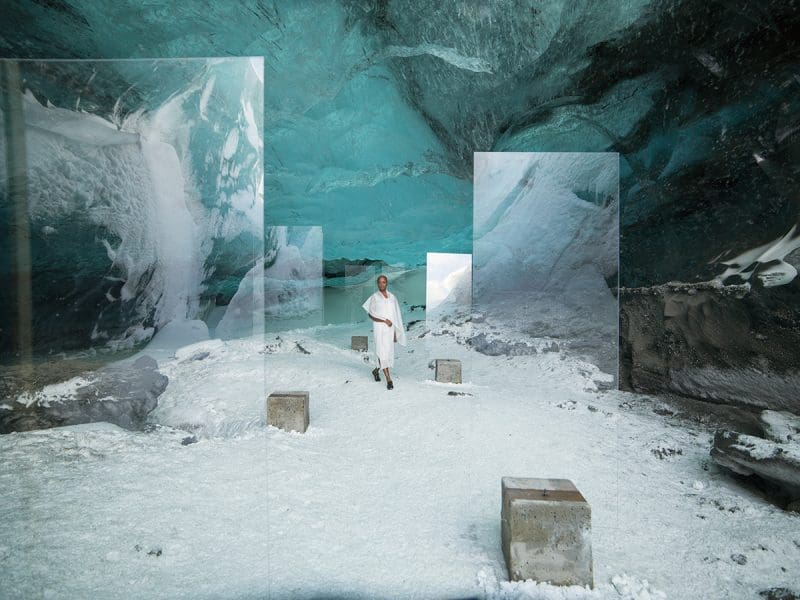
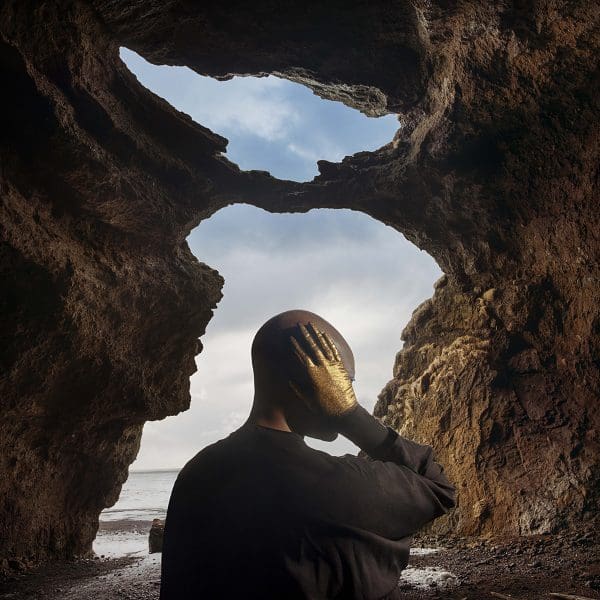
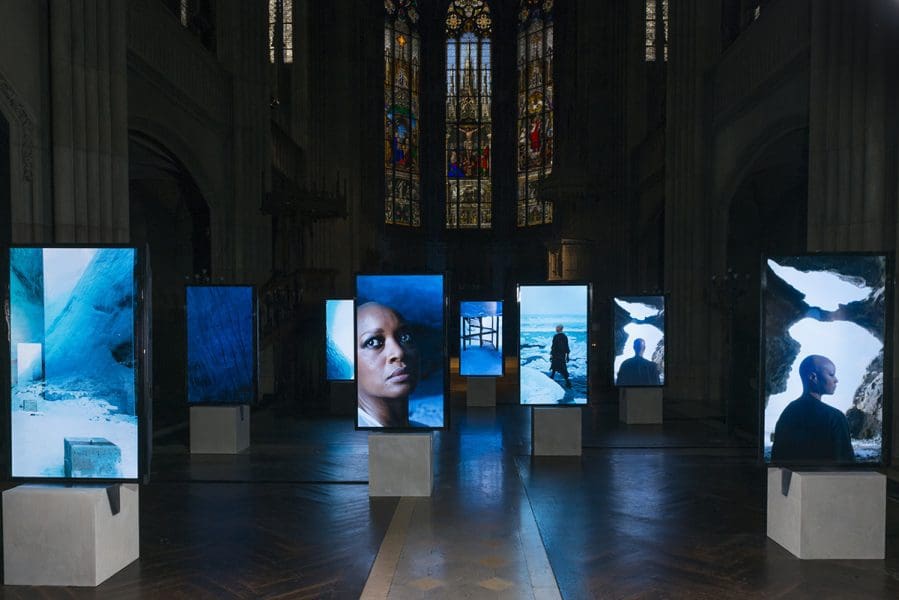
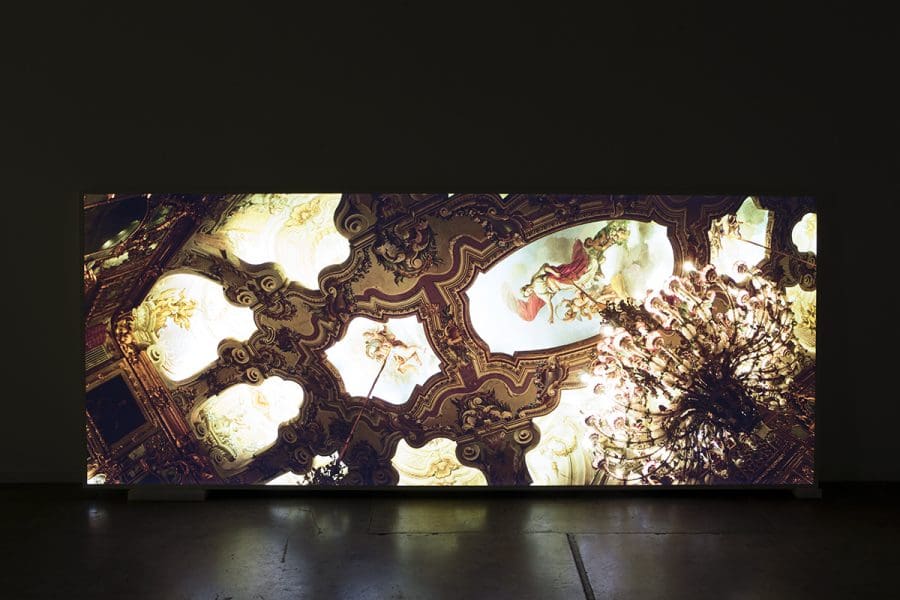
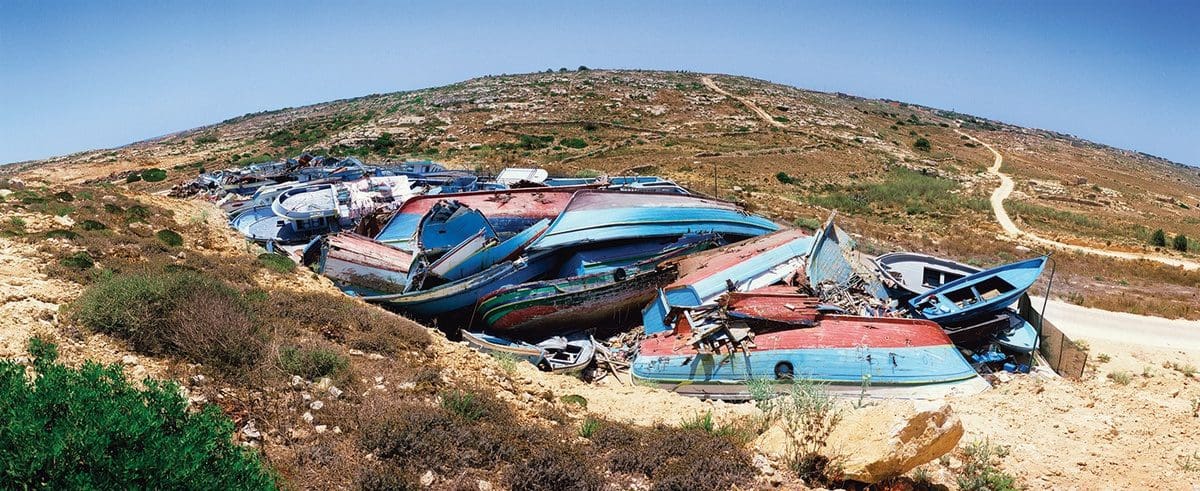
Isaac Julien’s father wanted the artist to become a banker or a lawyer: the transferred ambition was his dad’s version of a better life. Julien’s parents wanted a better life for themselves too. They emigrated to England from the Caribbean island of St Lucia. Julien’s Turner Prize nomination, in 1991, became a turning point. His father then realised that his son’s chosen career, initially drawing and painting, then filmmaking, was sustainable. Steve Dow met Julien on the eve of the opening of his show Refuge at Roslyn Oxley9 gallery. Julien, 56, was dressed in a dark jacket, pullover and scarf, as though he was still in London, despite the warm, sunny day outside.
Steve Dow: Your work WESTERN UNION: Small Boats, made in 2007 and filmed in Sicily, was prescient about the current migration crisis. In Australia, we stick refugees who’ve come by boat in indefinite detention offshore, on Nauru and Manus Island, with zero hope of coming to the mainland. Have you looked at Australia’s treatment of refugees?
Isaac Julien: We felt it would be really important to show the film now, because of the current debate. These themes are connected not only to Australia, but to what’s happening in Europe. It’s a global question. The role art has to play in this is to really try to open a space for debate in which you can appreciate these questions in a different way, through dance and choreography, enhancing conversation, instead of [discussion] being very binary…
The whole point of the journey was about people being able to work, and to send money back. That’s the reason for most people migrating, actually. It was the case with my own background, where my parents came from the Caribbean in the 1950s.
SD: The problem with the “stop the boat” mantra of Australian politicians is that it eschews a big-picture conversation about the world, as though questions of migration simplistically begin and end in territorial border parochialism.
IJ: Well, we’ve got Brexit in Britain, and you could say this whole debate, and a retreat into a certain provincialism, is a relationship of cause and effect globalism. But it’s also something that’s full of naïveté. We don’t know where we’re going to be in British culture: [Brexit] could become the demise of it, actually.
But looking at cultural change more positively, there could be something beneficial. Certainly in my example, I’m someone who is a product of a migration process. I make works, create art: it produces a culture, and can be a positive contribution.

SD: A letter by Italian-born Brazilian architect Lina Bo Bardi inspired your new installation, Stones Against Diamonds. It was recorded in remote caves in Vatnajökull, Iceland, and it’s shown on five vertical shard-like screens. You took a 50-member crew. I meditated on global warming while watching it; it’s so dream-like. Can Stones Against Diamonds be seen as a political work?
IJ: Well, I think so, but not in a didactic manner. It’s more nuanced. The dream-like aspect is important in this work, as a way into these questions. If it had been presented as facts in a documentary mode, we’d tend to switch off.
SD: You see the remote landscape as a metaphor for the unconscious. Did the landscape tell you what the film would be?
IJ: To a certain extent it does, there’s a level of improvisation. You have the structure of the film crew and equipment, but once on the ground, you’re responding to what you see, rather than following a linear script of any kind. Working with the space and environment, there’s a certain freedom when filming the work.
SD: I’ve read that there were three key figures who influenced your political and social outlook. When you were a teenager, you met Astrid Proll, who taught you about art and photography, but you didn’t know at the time that she was a member of the Baader-Meinhof Gang. Then there was the New Zealand artist Susan Shearer, who let you use her photographic darkroom, and Jenny Fortune, a community activist. Is it a coincidence that all these influential people were women?
IJ: Probably not [laughs]. Lina Bo Bardi was a woman architect, and Jenny Fortune, when I met her, was studying architecture. In a way, these are still really strong positions for me: I identify with those themes that are, in a sense, women’s stories.
SD: Your 2013 work, Playtime, looked at the financial crash and global crisis. Is it possible to stay true to your own language when money comes into art? I think you once said, “pragmatic scepticism is the only way to operate these days.”
IJ: [laughs] Artists are basically always questioning ways in which they’re working, and that produces art that hopefully has an autonomy as well. But we’re not outside of a system. Artists need access to capital to make works, I certainly do. That builds in a certain reality to your own ways of thinking about these questions.
SD: Art critic Mark Nash is you partner, both in life and work, and you have a production company together. Is Mark free to critique your work?
IJ: Absolutely. If you have a partner who is an art critic, or curator, it can keep your feet on the ground, put it that way.
Isaac Julien: Refuge
Roslyn Oxley9 Gallery
21 October – 19 November